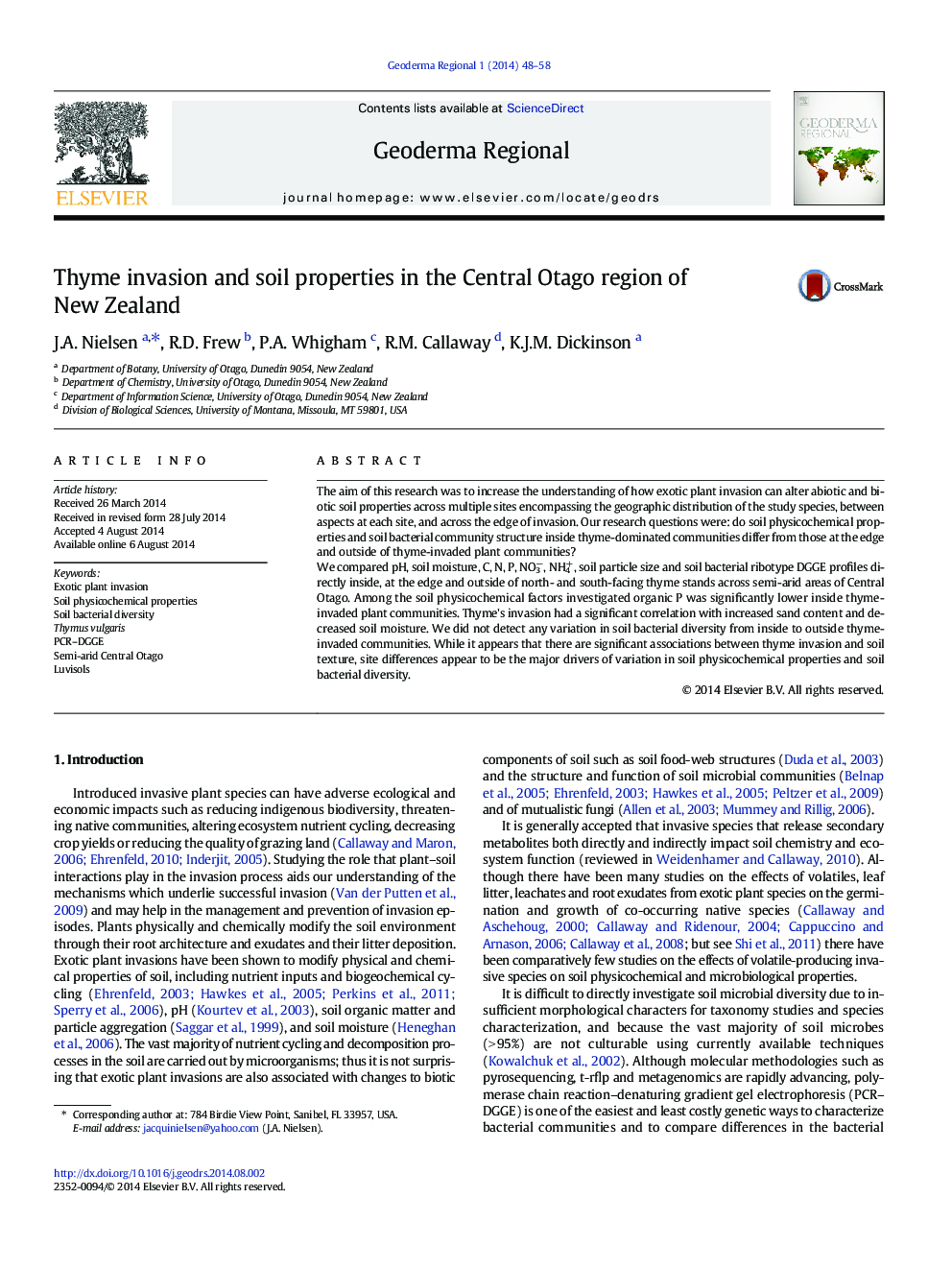| Article ID | Journal | Published Year | Pages | File Type |
|---|---|---|---|---|
| 4480824 | Geoderma Regional | 2014 | 11 Pages |
•We examined the influence of invasive thyme on abiotic and biotic soil properties.•Soil moisture, sand and organic P changed from inside to outside invaded communities.•Soil bacterial diversity did not differ from inside to outside invaded communities.•Site differences drive variation in soil abiotic and biotic soil properties.
The aim of this research was to increase the understanding of how exotic plant invasion can alter abiotic and biotic soil properties across multiple sites encompassing the geographic distribution of the study species, between aspects at each site, and across the edge of invasion. Our research questions were: do soil physicochemical properties and soil bacterial community structure inside thyme-dominated communities differ from those at the edge and outside of thyme-invaded plant communities?We compared pH, soil moisture, C, N, P, NO3−, NH4+, soil particle size and soil bacterial ribotype DGGE profiles directly inside, at the edge and outside of north- and south-facing thyme stands across semi-arid areas of Central Otago. Among the soil physicochemical factors investigated organic P was significantly lower inside thyme-invaded plant communities. Thyme's invasion had a significant correlation with increased sand content and decreased soil moisture. We did not detect any variation in soil bacterial diversity from inside to outside thyme-invaded communities. While it appears that there are significant associations between thyme invasion and soil texture, site differences appear to be the major drivers of variation in soil physicochemical properties and soil bacterial diversity.
